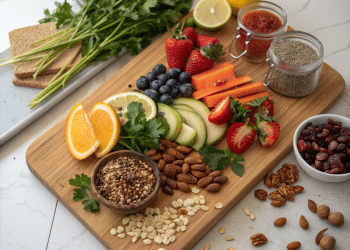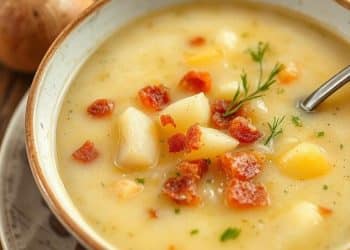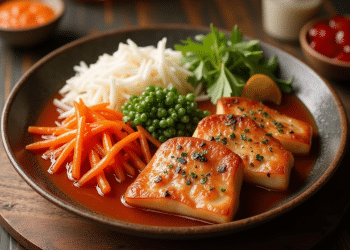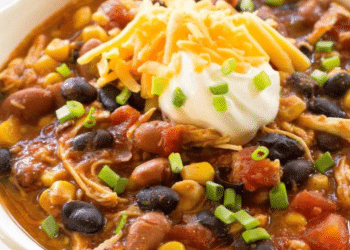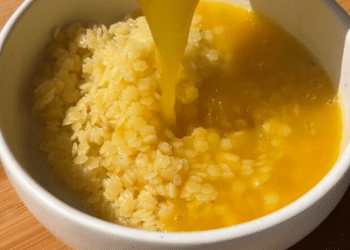Let’s be honest, when most people think of salads, they think of sad lettuce, a couple of cucumber slices, and maybe a tomato. But if you’re plant-based and craving something hearty, high protein vegan salad is where it’s at. These aren’t your rabbit food, flimsy excuses for meals. These are bold, satisfying, power-packed bowls of nutrition that leave you full, energized, and thriving.
Why High-Protein Vegan Salads Matter
The Protein Myth in Plant-Based Diets
One of the biggest myths about going vegan? That you can’t get enough protein. Total nonsense. Plants pack a protein punch—you just need to know where to look and how to build your meals smartly.
Benefits of High-Protein Vegan Salads
High-protein salads not only help keep you full but also support muscle maintenance, fat loss, and blood sugar stability. Plus, they’re easy to prep, portable, and super customizable.
Ideal Protein Intake for Vegans
A good rule of thumb? Aim for at least 20–30 grams of protein per meal, especially if you’re active. That’s easily doable with a mix of legumes, grains, and seeds.
Protein-Rich Ingredients to Boost Any Salad
Legumes and Beans
Chickpeas
Roasted or straight from the can, chickpeas add texture, flavor, and roughly 15g of protein per cup.
Black Beans
Perfect in southwest salads, black beans provide around 14g of protein per cup.
Lentils
Earthy and hearty, lentils offer 18g of protein per cooked cup—great for warm or cold salads.
Soy Products
Tofu
Firm tofu (about 20g per cup) soaks up flavors like a champ and can be grilled, baked, or pan-fried.
Tempeh
Nutty and dense, tempeh has about 30g per cup and adds a chewy texture to any salad.
Edamame
Bright, fun to eat, and protein-packed (17g per cup), edamame is a must in Asian-inspired salads.
Nuts and Seeds
Almonds and Walnuts
These add crunch and healthy fats. A small handful gives 4–6g of protein.
Chia, Flax, and Hemp Seeds
Superfoods with super benefits—chia and flax add fiber, while hemp boasts about 10g of protein per 3 tablespoons.
Whole Grains
Quinoa
This grain is a complete protein with 8g per cup and a fluffy, nutty texture.
Farro
Hearty and chewy, farro provides about 12g of protein per cooked cup.
Leafy Greens with Protein Punch
Spinach
One of the highest-protein leafy greens—1 cup has about 5g raw or 12g cooked.
Kale
Nutrient-dense and bold in flavor, kale gives around 3g per cup raw.
Must-Try High-Protein Vegan Salad Recipes
Chickpea Kale Caesar Salad
Massaged kale + roasted chickpeas + a cashew-based Caesar dressing = dreamy.
Spicy Tofu and Quinoa Power Bowl
Crispy tofu over quinoa with spicy tahini dressing—hot, savory, and deeply satisfying.
Edamame and Black Bean Fiesta Salad
Toss with corn, red onion, cilantro, lime, and avocado for a zesty protein hit.
Lentil and Roasted Veggie Salad
Warm roasted carrots, red onions, and bell peppers tossed with green lentils and a mustard vinaigrette.
Tempeh Thai Peanut Salad
Sautéed tempeh, shredded cabbage, carrots, and peanut sauce = addictive crunch and protein.
Dressing It Right: Protein-Boosting Vegan Dressings
Tahini-Based Dressings
Tahini is creamy, nutty, and protein-rich (5g per 2 tbsp). Perfect base for lemon-garlic or maple-mustard dressings.
Nut Butter Vinaigrettes
Almond or peanut butter whisked with apple cider vinegar, soy sauce, and a touch of agave = protein and flavor bomb.
Hummus as a Creamy Base
Thinned with water or lemon juice, hummus makes a killer protein-packed dressing.
Tips for Meal Prepping Vegan Protein Salads
Batch Cooking Your Proteins
Cook lentils, beans, quinoa, and tofu in bulk. Store separately and mix fresh for each meal.
Storage and Freshness Tips
Store greens and wet ingredients separately to avoid sogginess. Use airtight containers and layer wisely.
Keeping It Crunchy and Flavorful
Add nuts, seeds, or crunchy roasted chickpeas just before eating to maintain texture.
Common Mistakes to Avoid
Skimping on Calories
Salads shouldn’t leave you starving. Add enough fats, grains, and proteins to make it a full meal.
Relying on Just Veggies
Veggies are vital, but you need proteins and healthy fats to round it out.
Ignoring Macronutrient Balance
Protein, carbs, and fats all have a role. Don’t ditch carbs—grains like quinoa are nutritious and essential.
Conclusion
High-protein vegan salads are the ultimate way to eat clean, green, and mean. They bust the myth that vegan food is boring or not filling. With the right mix of ingredients—beans, tofu, grains, seeds—you’re not just building a salad, you’re building fuel for your body. So go ahead, ditch the rabbit food, and start eating like a plant-powered pro.
FAQs
Can you build muscle on vegan protein salads?
Absolutely. When built right, these salads can provide all the amino acids your muscles need—just be sure to include complete proteins or a mix that covers your bases.
Are these salads suitable for weight loss?
Yes! High-protein salads keep you full longer and help maintain lean mass while cutting calories.
How much protein should I aim for in one salad?
Aiming for 20–30 grams per serving is a great target, especially if the salad is your main meal.
Can kids eat high-protein vegan salads too?
Totally. Just adjust flavors and textures for their preferences, and you’ve got a nutritious, kid-friendly meal.
Are there raw options for high-protein vegan salads?
Yes! Try raw kale, shredded cabbage, soaked lentils, sprouted beans, and seeds to boost protein in raw salads.
You’ll also like :
Easy Sloppy Joe Recipe 3 Ingredients
Cheesy Chicken Broccoli Casserole: #1 Keto Casserole Recipe


